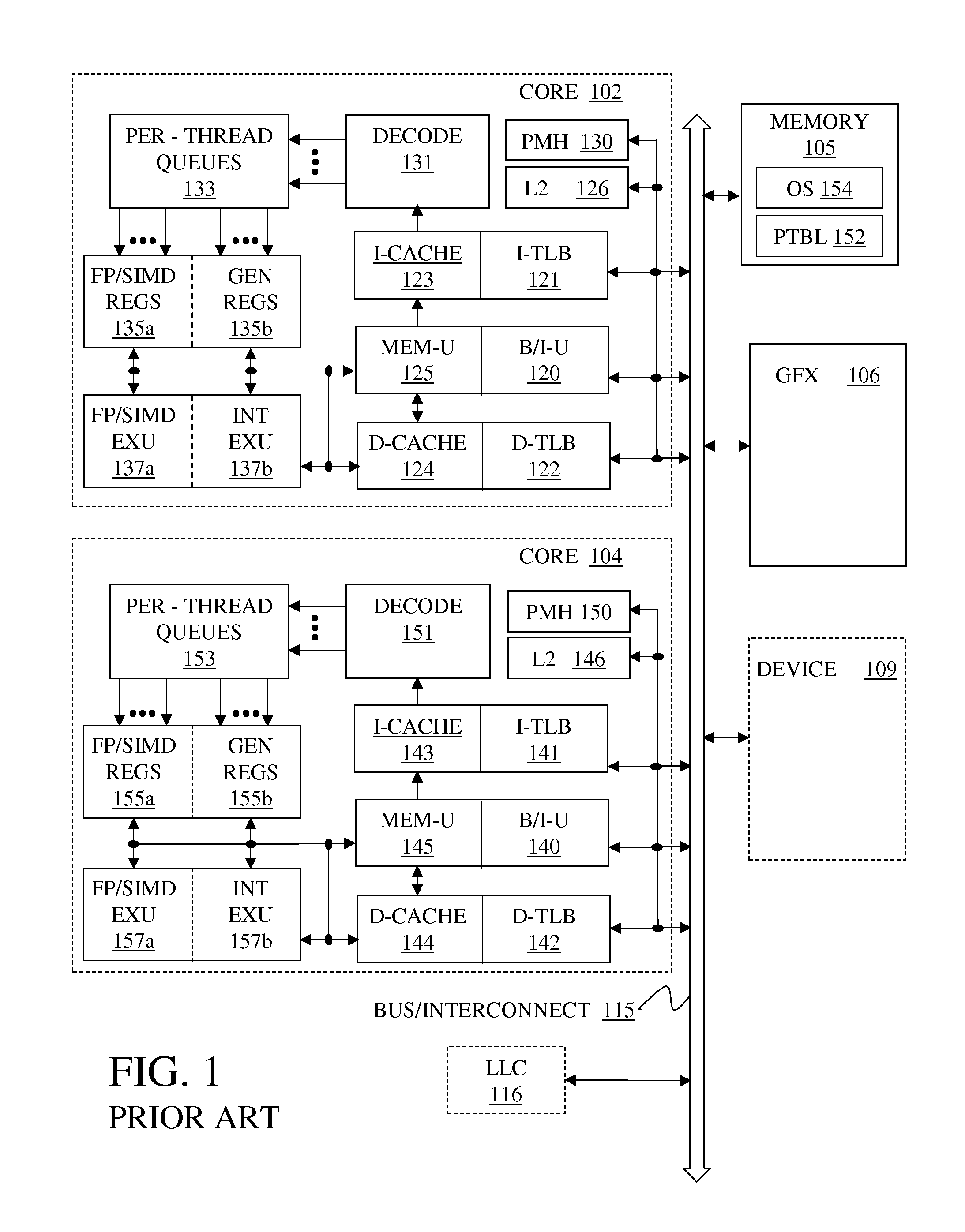Method and apparatus for tlb shoot-down in a heterogeneous computing system supporting shared virtual memory
a computing system and heterogeneous technology, applied in the field of computing and/or communication, can solve the problems of page fault, mechanism may have limited capabilities, and lack of ability to handl
- Summary
- Abstract
- Description
- Claims
- Application Information
AI Technical Summary
Benefits of technology
Problems solved by technology
Method used
Image
Examples
Embodiment Construction
[0015]Methods and apparatus are disclosed for efficient TLB (translation look-aside buffer) shoot-downs for heterogeneous devices sharing virtual memory in a multi-core system. Embodiments of an apparatus for efficient TLB shoot-downs may include a TLB to store virtual address translation entries, and a memory management unit, coupled with the TLB, to maintain PASID (process address space identifier) state entries corresponding to the virtual address translation entries. The PASID state entries may include an active reference state and a lazy-invalidation state. The memory management unit may perform atomic modification of PASID state entries responsive to receiving PASID state update requests from devices in the multi-core system and read the lazy-invalidation state of the PASID state entries. The memory management unit may send PASID state update responses to the devices to synchronize TLB entries prior to activation responsive to the respective lazy-invalidation state.
[0016]These...
PUM
 Login to View More
Login to View More Abstract
Description
Claims
Application Information
 Login to View More
Login to View More - R&D
- Intellectual Property
- Life Sciences
- Materials
- Tech Scout
- Unparalleled Data Quality
- Higher Quality Content
- 60% Fewer Hallucinations
Browse by: Latest US Patents, China's latest patents, Technical Efficacy Thesaurus, Application Domain, Technology Topic, Popular Technical Reports.
© 2025 PatSnap. All rights reserved.Legal|Privacy policy|Modern Slavery Act Transparency Statement|Sitemap|About US| Contact US: help@patsnap.com



